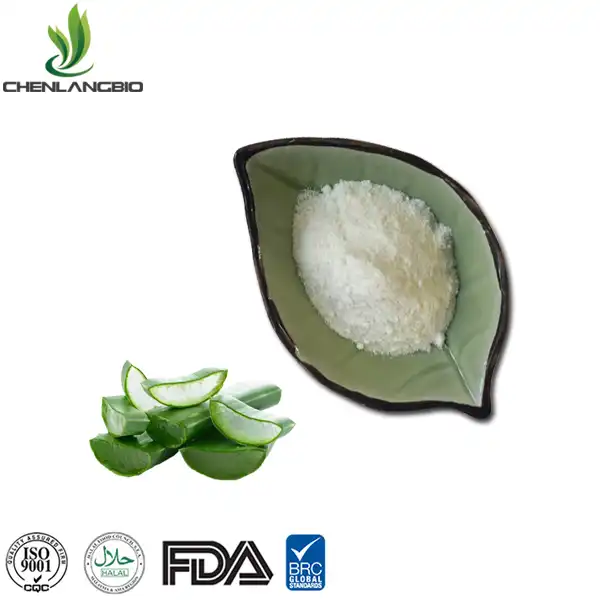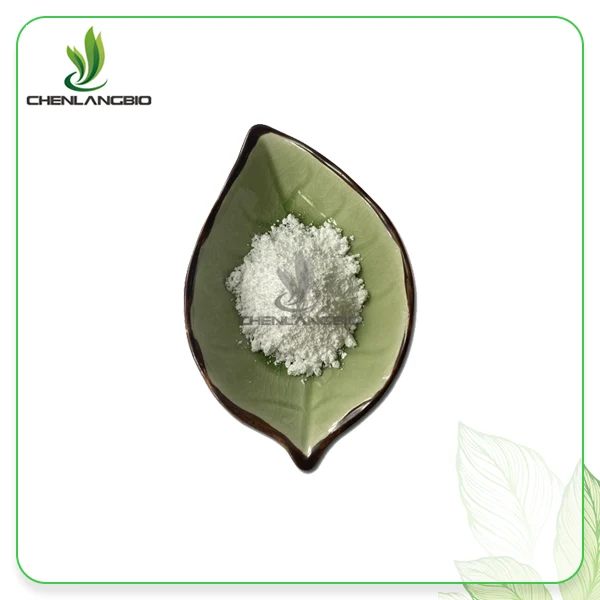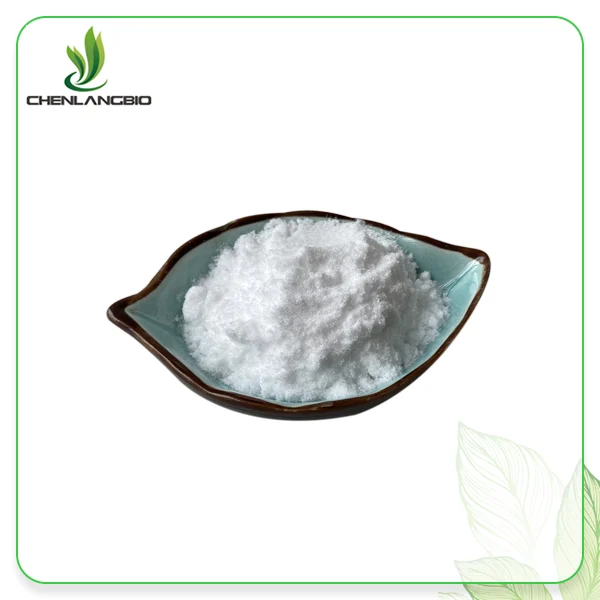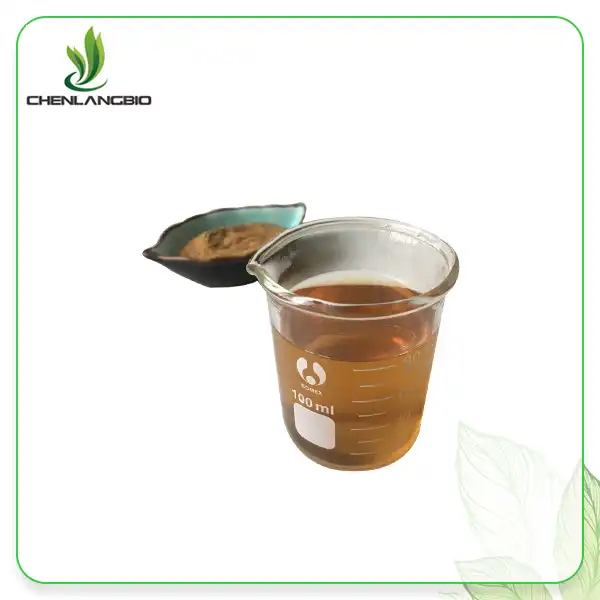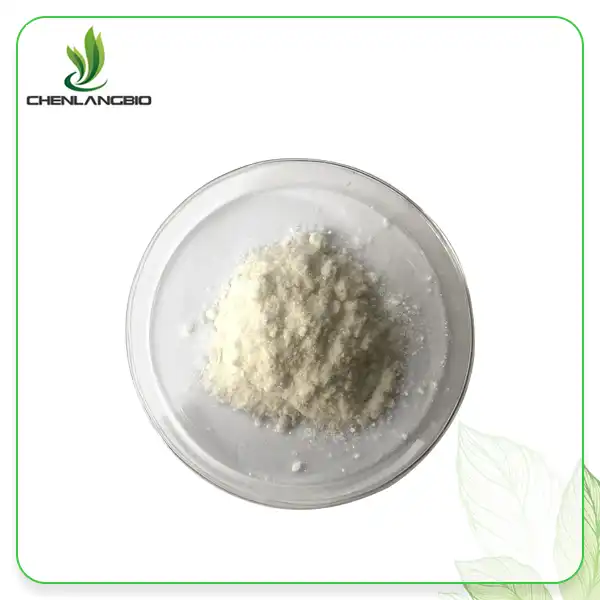Should PQQ be Taken with Coenzyme Q10 (CoQ10)?
2025-03-25 15:44:14
The question of whether pyrroloquinoline quinone (PQQ) should be taken alongside Coenzyme Q10 (CoQ10) is one that many health enthusiasts and supplement users frequently ask. This powerful combination has gained attention in the health and wellness community for good reason. Pyrroloquinoline Quinone, a relatively newly discovered nutrient, works synergistically with CoQ10 to support mitochondrial function and provide enhanced antioxidant protection. When taken together, these compounds offer complementary benefits that may surpass what either can achieve alone, making them an ideal pairing for those looking to support cellular energy production, cardiovascular health, and cognitive function.
The Science Behind PQQ and CoQ10 Combination
Understanding Mitochondrial Biogenesis
Mitochondria serve as the powerhouses of our cells, generating the energy required for virtually every cellular process. As we age, mitochondrial function naturally declines, contributing to various age-related health challenges. Pyrroloquinoline Quinone has emerged as a remarkable mitochondrial support nutrient, as it stimulates mitochondrial biogenesis—the creation of new mitochondria within cells. This process is fundamental to maintaining optimal cellular energy production. When our cells have healthy, abundant mitochondria, they function more efficiently, potentially slowing age-related decline. PQQ accomplishes this by activating PGC-1α, a protein that regulates genes involved in energy metabolism and mitochondrial development. Studies have demonstrated that PQQ supplementation can increase mitochondrial content in aging cells, effectively rejuvenating their energy-producing capacity. This cellular renewal mechanism represents one of the primary reasons health practitioners increasingly recommend Pyrroloquinoline Quinone as part of a comprehensive approach to healthy aging and maintaining optimal energy levels throughout life.
Complementary Antioxidant Properties
The antioxidant capabilities of pyrroloquinoline quinone and CoQ10 work through different but complementary mechanisms, providing more comprehensive protection against oxidative stress. PQQ exhibits extraordinary antioxidant power, significantly exceeding that of traditional antioxidants like vitamins C and E. What makes PQQ particularly remarkable is its recyclability—it can undergo thousands of redox cycles rather than being depleted after neutralizing a single free radical. This persistent antioxidant activity allows it to provide long-lasting cellular protection. Meanwhile, CoQ10 serves as a crucial component in the electron transport chain within mitochondria and functions as a potent lipid-soluble antioxidant that protects cell membranes from peroxidation. Together, these compounds create a robust antioxidant network that addresses oxidative damage across multiple cellular compartments. For individuals concerned about oxidative stress—whether due to aging, environmental factors, or health conditions—the PQQ-CoQ10 combination offers a powerful strategy for comprehensive cellular protection that neither supplement alone can fully provide.
Cardiovascular Health Benefits
The cardiovascular system benefits substantially from the combined effects of Pyrroloquinoline Quinone and CoQ10. Heart muscle cells contain the highest concentration of mitochondria in the body due to their constant energy demands, making them particularly vulnerable to mitochondrial dysfunction. PQQ has demonstrated remarkable cardioprotective properties, with research indicating it can reduce the size of damaged areas following acute cardiac events. It accomplishes this by inhibiting the inflammatory response and oxidative damage that typically occurs during cardiac stress. CoQ10 complements these effects by serving as a vital component in the production of ATP within heart muscle cells and protecting cardiovascular tissues from oxidative damage. Furthermore, CoQ10 levels naturally decline with age and can be depleted by commonly prescribed statin medications, making supplementation particularly relevant for older adults and those on cardiac medications. Clinical studies have shown that combined supplementation may improve markers of heart health including improved endothelial function, reduced inflammatory markers, and better management of blood pressure. This powerful duo creates a synergistic approach to supporting heart health through multiple pathways simultaneously.
Optimal Dosage and Timing Strategies
Finding the Right Balance
Determining the ideal dosage ratio between Pyrroloquinoline Quinone and CoQ10 requires consideration of individual health needs and goals. Most clinical studies showing beneficial effects have used PQQ dosages ranging from 10-20 mg daily, which aligns with the European Union's approved daily consumption limit of ≤20 mg. As for CoQ10, effective dosages typically range from 100-300 mg daily depending on individual needs and specific health concerns being addressed. When combining these supplements, many practitioners recommend starting with the lower end of these ranges—approximately 10 mg of PQQ with 100 mg of CoQ10—and adjusting based on individual response. Factors influencing optimal dosage include age, health status, medication use, and specific health objectives. For instance, individuals taking statin medications may benefit from higher CoQ10 dosages due to the CoQ10-depleting effects of these drugs. Similarly, older adults might require more robust supplementation as natural production of both compounds diminishes with age. It's worth noting that while these supplements are generally well-tolerated, it's always advisable to consult with a healthcare provider before beginning any new supplementation regimen, especially for those with existing health conditions or those taking medications.
Time of Day Considerations
The timing of pyrroloquinoline quinone and CoQ10 supplementation can significantly impact their absorption and effectiveness. Both compounds are fat-soluble, meaning they're best absorbed when taken with meals containing some healthy fats. This not only enhances bioavailability but also minimizes potential digestive discomfort that some individuals might experience when taking supplements on an empty stomach. Many nutrition experts recommend taking these supplements with breakfast or lunch rather than dinner, as their potential energy-enhancing effects might interfere with sleep quality if taken too close to bedtime. For those specifically seeking cognitive benefits, morning supplementation may be preferable to support mental clarity throughout the day. Another approach gaining popularity is split dosing, where the daily amount is divided between morning and early afternoon to maintain more consistent blood levels. Furthermore, some evidence suggests that coordinating PQQ and CoQ10 intake with other mitochondrial support nutrients like B vitamins, magnesium, and alpha-lipoic acid may enhance their collective benefits. The key is establishing a consistent routine that works with your lifestyle and dietary patterns, as the most effective supplement regimen is ultimately the one you can maintain consistently over time.
Maximum Efficacy Strategies
To maximize the benefits of combined Pyrroloquinoline Quinone and CoQ10 supplementation, several evidence-based strategies should be considered. First, choosing the right forms of each supplement significantly impacts absorption and utilization. For PQQ, the sodium salt form (PQQ-2Na+) offers superior water solubility and bioavailability compared to other forms. With CoQ10, the ubiquinol form has demonstrated better absorption than the ubiquinone form, particularly in older adults whose conversion capacity may be diminished. Next, consistency is crucial—cellular regeneration and mitochondrial biogenesis require regular supplementation over time, with many studies showing cumulative benefits after 8-12 weeks of consistent use. Synergistic nutrients can further enhance results; research suggests that adding omega-3 fatty acids can improve the membrane incorporation of CoQ10, while vitamin B complexes support the energy metabolism pathways that both PQQ and CoQ10 influence. Additionally, lifestyle factors play a significant role in supplement efficacy. Regular physical activity naturally stimulates mitochondrial biogenesis, potentially amplifying the effects of these supplements. Conversely, chronic stress, poor sleep, and excessive alcohol consumption can counteract benefits by increasing oxidative stress and impairing mitochondrial function. By addressing these various factors comprehensively, users can create an optimal environment for PQQ and CoQ10 to exert their full potential.
Beyond Mitochondria: Additional Benefits of Combined Supplementation
Cognitive Performance Enhancement
The neuroprotective and cognitive-enhancing effects of Pyrroloquinoline Quinone and CoQ10 make them particularly valuable for brain health. The brain is exceptionally energy-demanding, consuming approximately 20% of the body's energy despite comprising only about 2% of total body weight. This high energy requirement makes neurons particularly dependent on mitochondrial function and vulnerable to oxidative damage. PQQ has demonstrated remarkable neuroprotective properties, with research showing it can stimulate nerve growth factor production and protect neurons against toxicity and oxidative stress. It effectively repairs nerve fibers and activates neurons, thereby potentially improving memory and offering protection against neurodegenerative conditions. CoQ10 complements these effects by maintaining energy production in brain cells and reducing the oxidative damage that contributes to cognitive decline. Particularly promising is research indicating that PQQ may help prevent the formation of amyloid plaques associated with Alzheimer's disease, while CoQ10 has shown potential in slowing functional decline in conditions like Parkinson's disease. For individuals concerned about cognitive longevity or currently experiencing mild cognitive issues, the PQQ-CoQ10 combination offers a multi-faceted approach to supporting brain health by addressing the energetic, structural, and protective needs of neural tissue simultaneously.
Anti-Aging and Longevity Effects
The combined supplementation of pyrroloquinoline quinone and CoQ10 presents promising implications for longevity and healthy aging. Cellular aging is significantly influenced by mitochondrial health, with dysfunctional mitochondria contributing to the hallmarks of aging through increased oxidative damage, reduced energy production, and impaired cellular repair mechanisms. PQQ's ability to stimulate mitochondrial biogenesis effectively creates fresh, functional mitochondria that can replace damaged ones, potentially rejuvenating cellular function even in older tissues. This regenerative capacity has profound implications for counteracting age-related decline. Meanwhile, CoQ10 serves as a crucial defender of existing mitochondria, maintaining their functional integrity and protecting them from oxidative damage. Beyond their mitochondrial effects, both compounds have been shown to reduce systemic inflammation—another key driver of biological aging. Additionally, PQQ demonstrates promising effects on telomere length preservation, with preliminary research suggesting it may help maintain these protective DNA caps that naturally shorten with age. For those interested in the expanding field of geroscience (the study of aging), combining these supplements represents a science-based approach to potentially extending not just lifespan but more importantly "healthspan"—the period of life spent in good health, free from chronic disease and functional limitations.
Metabolic Health Improvements
The metabolic benefits of combining Pyrroloquinoline Quinone and CoQ10 extend beyond energy production to influence glucose metabolism, weight management, and metabolic resilience. Research has demonstrated that PQQ can enhance insulin sensitivity and improve glucose tolerance, potentially offering support for individuals with metabolic syndrome or pre-diabetic conditions. It accomplishes this partly through its ability to reduce inflammation in fat tissue and improve mitochondrial function in metabolically active tissues like the liver and skeletal muscle. CoQ10 complements these effects by supporting proper insulin signaling pathways and protecting pancreatic β-cells from oxidative damage, thereby helping maintain healthy insulin production. Together, these compounds may help regulate critical metabolic pathways involved in carbohydrate and fat metabolism. Furthermore, by enhancing mitochondrial function, this combination potentially improves metabolic flexibility—the body's ability to efficiently switch between different fuel sources based on availability and demand. This adaptability is increasingly recognized as a key factor in metabolic health and weight management. Some studies suggest that PQQ supplementation may influence fat metabolism and reduce triglyceride accumulation in liver cells, while CoQ10 has shown promise in enhancing exercise performance and recovery—further supporting overall metabolic health. For individuals struggling with metabolic challenges or seeking to optimize their metabolic function, the PQQ-CoQ10 combination offers a comprehensive approach that addresses the cellular and biochemical foundations of metabolism.
Conclusion
The synergistic relationship between pyrroloquinoline quinone and CoQ10 makes them ideal companions in your supplement regimen, offering enhanced mitochondrial support, powerful antioxidant protection, and comprehensive cellular health benefits beyond what either can provide alone. For quality-assured PQQ supplementation, trust Xi An Chen Lang Bio Tech Co., Ltd's premium Pyrroloquinoline Quinone products, manufactured under strict quality control standards. Experience the difference in your health journey—contact us today at admin@chenlangbio.com.
References
1. Nakano M, Ubukata K, Yamamoto T, Yamaguchi H. Effect of Pyrroloquinoline Quinone (PQQ) on Mental Status of Middle-Aged and Elderly Persons. Journal of Nutritional Science and Vitaminology. 2009;55(6):449-456.
2. Harris CB, Chowanadisai W, Mishchuk DO, Satre MA, Slupsky CM, Rucker RB. Dietary pyrroloquinoline quinone (PQQ) alters indicators of inflammation and mitochondrial-related metabolism in human subjects. Journal of Nutritional Biochemistry. 2013;24(12):2076-2084.
3. Stites T, Storms D, Bauerly K, et al. Pyrroloquinoline quinone modulates mitochondrial quantity and function in mice. Journal of Nutrition. 2006;136(2):390-396.
4. Mortensen SA, Rosenfeldt F, Kumar A, et al. The effect of coenzyme Q10 on morbidity and mortality in chronic heart failure: results from Q-SYMBIO. JACC Heart Failure. 2014;2(6):641-649.
5. Alehagen U, Johansson P, Björnstedt M, Rosén A, Dahlström U. Cardiovascular mortality and N-terminal-proBNP reduced after combined selenium and coenzyme Q10 supplementation. International Journal of Cardiology. 2013;167(5):1860-1866.
6. Chowanadisai W, Bauerly KA, Tchaparian E, Wong A, Cortopassi GA, Rucker RB. Pyrroloquinoline quinone stimulates mitochondrial biogenesis through cAMP response element-binding protein phosphorylation and increased PGC-1alpha expression. Journal of Biological Chemistry. 2010;285(1):142-152.



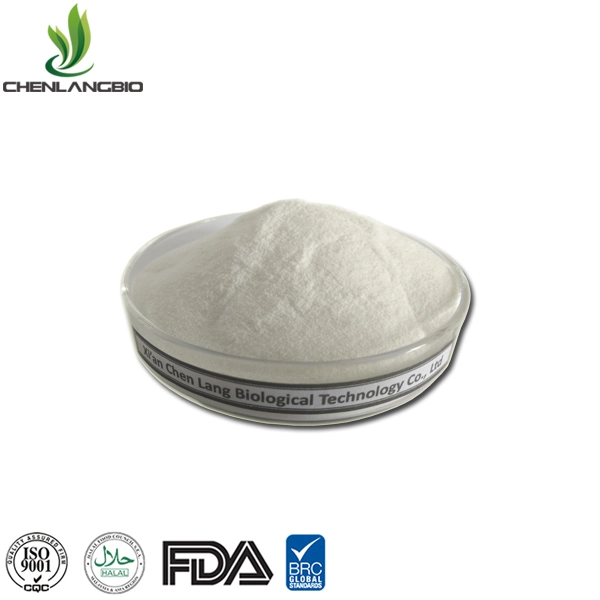
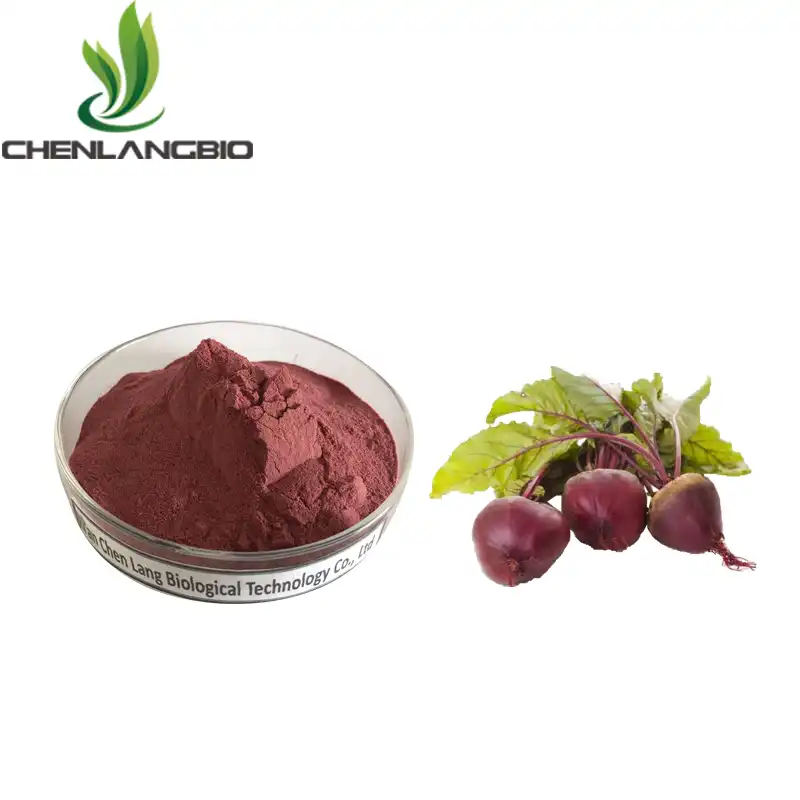
_1728886308482.webp)
